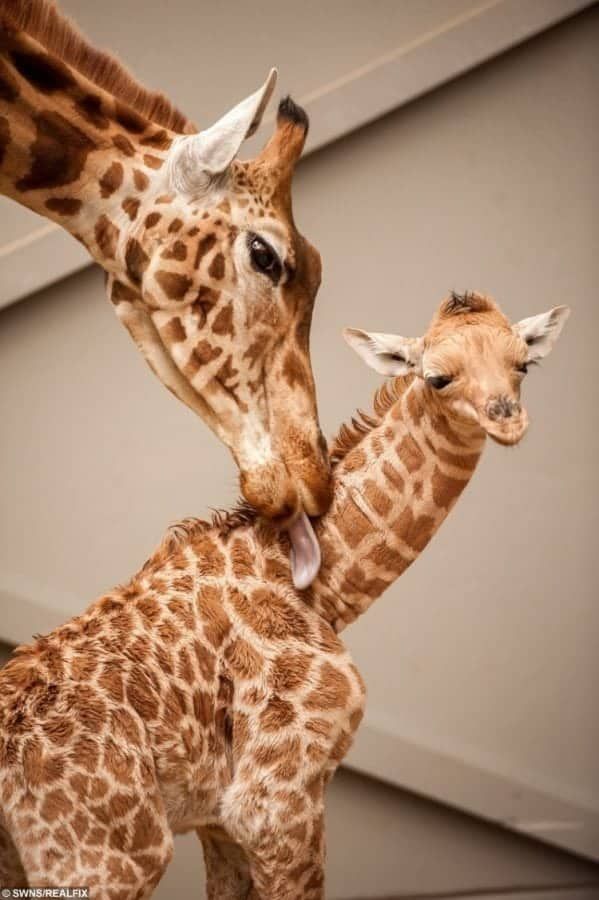
Humans are “eating animals to extinction”, warns new research.
Numbers of at least 200 of the world’s large creatures are decreasing dramatically – with over 150 facing being killed off completely, according to scientists.
And they say people’s appetite for meat is mainly to blame.
Corresponding author Professor William Ripple, of Oregon State University College of Forestry in the US, said: “Our results suggest we’re in the process of eating megafauna to extinction.”
Among those threatened is the Chinese giant salamander – which can grow up to six feet long.
It’s one of only three living species in an amphibian family that can be traced back 170 million years.
Considered a delicacy in Asia it’s under siege by hunting, development and pollution – and its extinction in the wild is now imminent.
Prof Ripple said: “Preserving the remaining megafauna is going to be difficult and complicated.
“There will be economic arguments against it – as well as cultural and social obstacles.
“But if we don’t consider, critique and adjust our behaviours, our heightened abilities as hunters may lead us to consume much of the last of the Earth’s megafauna.”
Over the past 500 years humans’ ability to kill wildlife at a safe distance has become highly refined.
This has coincided with two percent of megafauna species going extinct. For all sizes of vertebrates, the figure is 0.8 percent.
The study, published in the journal Conservation Letters, analysed almost 300 species of ‘megafauna’ – big animals cuch as elephants, giraffes, whales, cows, deer and tigers.
It found that of those populations 70 per cent are in decline – and 59 per cent threatened with disappearing from the globe.
Prof Ripple said: “Direct harvest for human consumption of meat or body parts is the biggest danger to nearly all of the large species with threat data available.
“Thus, minimising the direct killing of these vertebrate animals is an important conservation tactic that might save many of these iconic species as well as all of the contributions they make to their ecosystems.”
His team was part of an international collaboration that built a list of megafauna based on body size and taxonomy.
Those that qualified were unusually large in comparison to other species in the same classification.
The mass thresholds decided on were 100 kilos (220 lbs) for mammals and fish and 40 kgss (88 lbs) for amphibians, birds and reptiles which are generally smaller.
Prof Ripple said: “Those new thresholds extended the number and diversity of species included as megafauna – allowing for a broader analysis of the status and ecological effects of the world’s largest vertebrate animals.
“Megafauna species are more threatened and have a higher percentage of decreasing populations than all the rest of the vertebrate species together.”
Nine megafauna species have either gone extinct overall – or in the wild – in the past 250 years.
These include two species of giant tortoise – one of which disappeared in 2012 – and two of deer.
Prof Ripple said: “Through the consumption of various body parts users of Asian traditional medicine also exert heavy tolls on the largest species.
“In the future, 70 percent will experience further population declines and 60 per cent of the species could become extinct or very rare.”
Throughout our entire history, humans and other hominins have selectively killed off the largest mammals.
There used to be a type of elephant called Palaeoloxodon that could have rested its chin on the head of a modern African elephant.
There was a hornless rhino called Paraceratherium, which was at least 10 times heavier than living rhinos.
There was once a giant wombat that could have looked you level in the eye, a ground sloth the size of an elephant, a short-faced bear that would have loomed over a grizzly, and car-sized armadillos with maces on their tails.
After most of the dinosaurs went extinct at the end of the Cretaceous period, 66 million years ago, mammals took over as the largest creatures on land – and they became really big.
But during the late Pleistocene, from around 125,000 years ago, these megafauna started disappearing.
Last year another study by US researchers also put the blame squarely on humans and our hominin relatives.
By looking at how mammals have changed in size over time they found whenever humans are around, the mammals that disappear tend to be 100 to 1,000 times bigger than those that survive.
Prof Ripple said: “In addition to intentional harvesting, a lot of land animals get accidentally caught in snares and traps, and the same is true of gillnets, trawls and longlines in aquatic systems.
“And there’s also habitat degradation to contend with. When taken together, these threats can have major negative cumulative effects on vertebrate species.”
By Mark Waghorn
https://www.thelondoneconomic.com/lifestyle/i-tried-going-vegan-heres-happened/07/03/